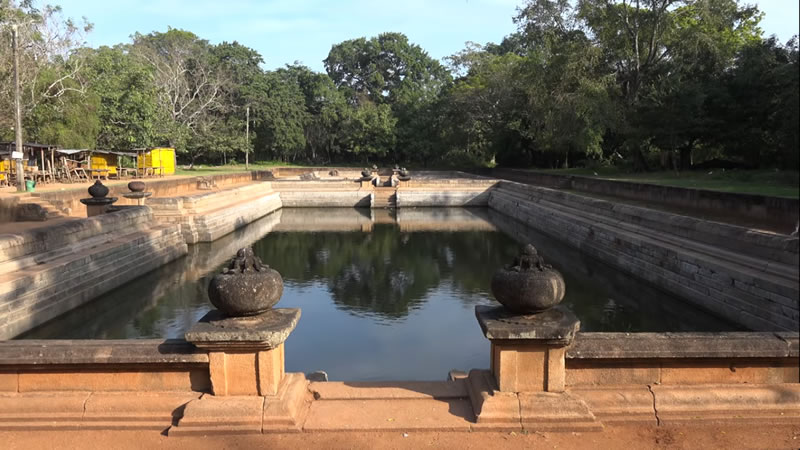Escape From the Beach: Visit Anuradhapura
Ancient Anuradhapura, the crumbling metropolis founded in the 3rd century BCE, shows a stark contrast to the decadence of beach life on the pristine beaches of Sri Lanka’s west coast.
Table of Contents
“Should I visit Anuradhapura ?”, “Why should I visit Anuradhapura ?”, “what do we see in Anuradhapura ?” are some of the most common questions that come on our way during the planning stage of tours, because a large number of travellers, especially the foreigners have no idea what Anuradhapura is about.
Once the hippie paradise of Hikkaduwa of western Sri Lanka in 19s, the beautiful beaches of the Sri Lankan west coast are now overrun with foreign tourists, hawkers and local travellers. Some of the beaches such as Bentota, Hikkaduwa, Unawatuna, Kalutara and Negombo see a large influx of foreign travellers, especially during the winter of the northern hemisphere.
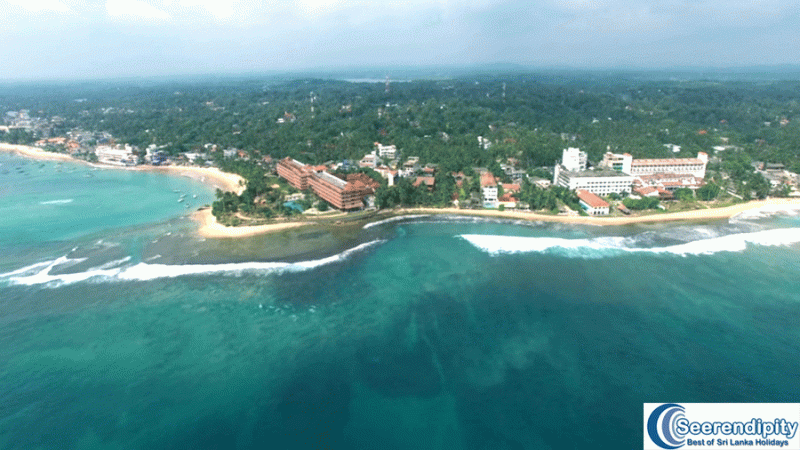
Last year Sri Lanka tourism had to renew its record of tourist arrival to the island, which is constantly on the rise since 2009, since the end of the civil war. But just a few hours away from the tightly packed, pristine beaches, sit the remnants of one of the greatest cultures of the world, it had been the centre of the Theravada school of Buddhism. Ancient Anuradhagama, better known as Anuradhapura, is just a five hours drive from Hikkaduwa and most parts of western Sri Lanka’s chill-out scene. It has a noticeable contrast against beachfront life.
Vast muddy plains that are soaked in water drop away into huge rice fields, where farmers hang around with their traditional dress, sarong, and drive oxen on their bare feet. Vegetable plots and banana cultivations sit in isolation and occupy a vast expanse of countryside farmlands. Lakes, rivers and canals litter the countryside, in torque blue and green, while huge granite boulders occupy some empty spaces, a greenish backdrop to the sprawling ancient ruins.
This ancient city was ransacked by invaders many times from the 3rd century BCE to the 11th century AD, leaving behind an important historical city with cultural and religious monuments, today it is an important UNESCO world heritage site in Asia.
Anuradhapura, the crumbling metropolis in the north-central province of Sri Lanka, once stood as a well-planned beautiful city in its time. Now it is one of the most attractive historical sites with impressive ruins. This is why travellers love and visit Anuradhapura.
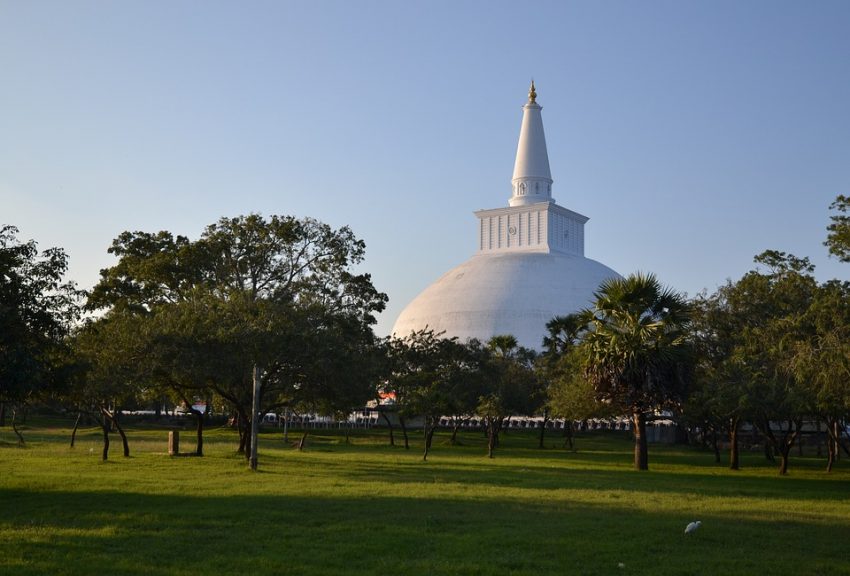
Visit Anuradhapura, Where to start?
Most travellers, who visit Anuradhapura, stay either near Anuradhapura historical city or Sigiriya. The travellers who plan to visit Anuradhapura along with other important historical places such as Sigiriya and Dambulla choose Sigiriya as their place of accommodation because Sigiriya is centrally located in the cultural triangle and provides easy access to all major tourist hot spots.
The scale of Anuradhapura should not be underestimated (50 hectares), most ruins are scattered in a much smaller area, and however, it is necessary to rent a bike or taxi in order to cruise from temple to temple, as it is very warm and sweaty in this dry zone area.
The perfect two-day visit to Anuradhapura
The best and easiest way to understand the magnitude size of the Anuradhapura historical site is to hike the Isurumuiya temple, preferably in the afternoon to escape from the scorching heat and best views. Climbing a few dozen steps that are carved onto the stone, is required to reach the summit of the monolithic granite stone, and have a bird’s eye view of a large part of the historical city.
Anuradhapura, once-thriving capital was inhabited by around 50,000 people before it was neglected due to the unceasing attacks and pillaging of Indian invaders. How the city looked in the past and what it looks like today is a constant part of the experience in Anuradhapura.
From there, head to the interior of the city to start exploring the ruined city, the Sri Maha Bodhi or sacred Bo-tree (ficus religiosa), to see Buddhist devotees marching around the tree holding a tray of flowers in their hands with overwhelming devotion before it was put on the altar. A large number of foreign travellers also gather here in the early hours and in the afternoon to witness the oldest document tree in the world, which dates back to the 2nd century BC.
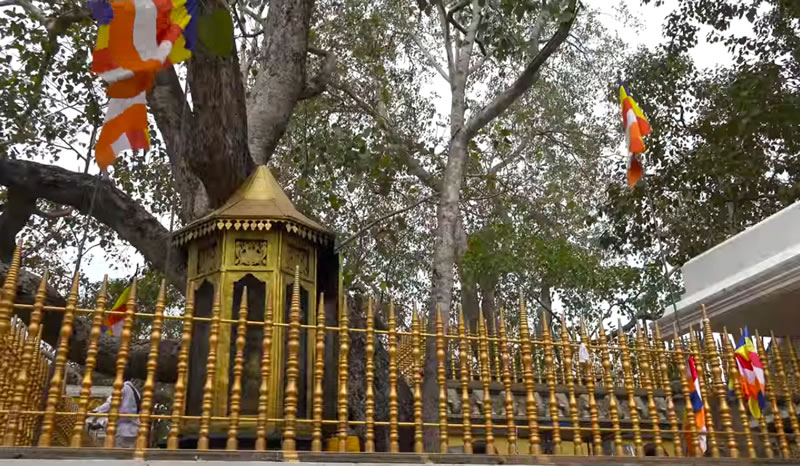
To continue exploring Anuradhapura ruins, proceed northward from Sri Maha Bodhi to Ruwanweli maha Seya, Or Ruwanweli Stupa (a large dorm-shaped structure) – Stupa believed to be enshrined with Relics of Buddha.
Ruwanweliseya had been one of the biggest ancient monuments in the world with a height of 103 m and a circumference of 290 m, taking a walk around the imposing Stupa is the best way to feel the magnitude of the size of the structure. However, the elevated platform with paved granite stone slabs is about 10 meters wide and can be really, really hot during midday. It is customary to remove shoes and hats before entering the temples, even after the sunset, the stone slabs still feel the warmth.
Next, as you continue in the inner-city, a labyrinthine of roads and streets with several sets of ruins, and beyond that, the twin ponds, two large tanks with stone carved stairs and sumptuously decorated balustrade to reach the water level.
Several festivals occur in the city every year such as the Vesak festival: in May and Poson festival: June, daily three times a day with drumming and flute music with local gathering also takes place as the Pujas or offerings takes place in the main temples, Srimaha bodhi and Ruwanweliseya.
The entrance ticket to the historical site can be bought at the main entrance of Anuradhapura archaeological city, which is maintained by the archaeological department; One ticket allows you to visit dozens of monuments, most temples, and museums, only two temples in the historical city (Isurumuniya and Sri Maha Bodhi) make a nominal charge to meet their maintenance cost.
The brazen palace is a large multi-storied building featuring 1600 symmetrical stone pillars, grounded into 40×40 rows of pillars on the north-south and east-west axis. According to the historical notes, the building was a residential quarter of the monks of Mahavihara temple and located between Sri Maha Bodhi and Ruwanweli Stupa, belied to be patronage by the king and lavishly decorated with gemstones studded walls.
The 9 stories building was consisting of 1000 rooms, it is shrouded in mystery as to why this building was burnt down and under what circumstances it was destroyed, however, it is assumed that an oil lamp could have been the cause of the fire, as the building was a wooden structure.
Next is the Thuparama stupa, dating back to the 2nd century BCE and one of the oldest stupid on the island. The ancient Stupa was built with mud and clay and had a roof in order to prevent erosion due to the heavy monsoon rain. Thuparama is one of the best-preserved monuments in the city and had been renovated several times in the past. The roof does not exist anymore and only the gigantic stone pillars that once held the roof still stand around the Stupa.
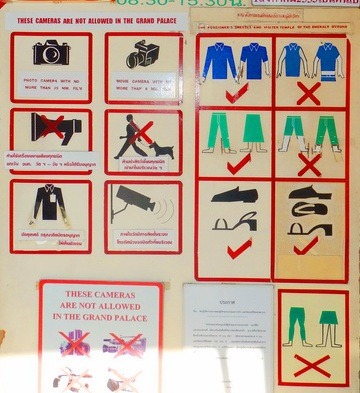
There are many other imposing structures such as Jetawanarama, and Abhayagiriya as well as gigantic lakes and reservoirs along with many other artistic achievements of ancient engineers and artisans to see during the visit to Anuradhapura. The visit to Anuradhapura should be at least a half-day venture; however, dawn to dusk visit to Anuradhapura is ideal to explore the ancient city in leisure.
Before you go
Most monuments in the city have religious significance and therefore it is necessary to refrain from consuming alcohol in the city as well as immediately before entering the site. Upon entering the religious monuments the visitors are required to remove their shoes and hats. It is also important to dress appropriately while visiting temples, which means the upper part of the dress should cover the shoulders and the lower part of the dress should be long enough to cover the knee.

